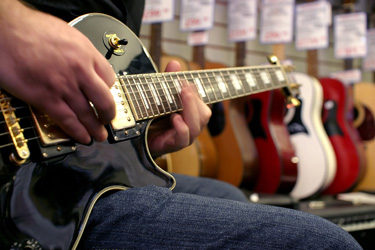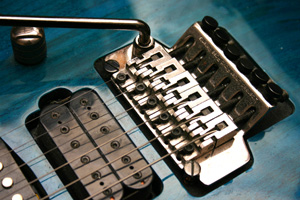|
Buying a Guitar - Part OneWhen buying a guitar it is important to bear in mind a few essential points and seek help. Don't feel you need to do it all on your own, there are thousands of different guitars out there, with bewildering options and prices. Let me shed some light on the process.
Initial Considerations Initial considerations when buying a guitar are, what type of guitar, Electric or Acoustic? What is your preferred style of music, what do your heroes play? If you listen to Slipknot or Disturbed you are certainly going to be in the electric camp, whereas if you are a big fan of Don McClean or John Williams you will be heading down the acoustic highway. At some point you may wish to own both types of guitar, most guitarists I know have at least one of each. Remember though that when you buy an electric guitar you will also need the amplifier and guitar lead which may be an additional expense, although you can opt for a package which includes the guitar and all the accessories. However, with an acoustic guitar you don't really need an amplifier unless you eventually intend gigging. Test Driving and Checks Playability is another very important consideration when buying a guitar; the action (the closer the strings are to the frets, the easier it will be for a beginner to press the strings down and therefore the easier it will be to form those first chords), the weight of the guitar and general comfort of sitting with the guitar (Flying V's don't fare well here), and simplicity.
By 'simplicity' I am referring to some of the more complex options that are available, especially in relation to electric guitars, for example tremolo systems. Buying your first guitar with a Floating tremolo system like Floyd Rose or Kahler will cause you no end of grief getting the guitar initially in tune, and keeping it in tune. So try to avoid these for your first guitar, keep these guitars for your upgrade which will inevitably happen.
Check all the machine heads to ensure they wind both ways without snagging or clicking. Most tuners these days on electric and acoustic guitars are of the sealed variety so do not need any maintenance like older open cog models. Other things that you need to check when buying a guitar, new or used relate to the overall condition. Ensure the neck is not warped, look down the neck from the headstock to the bridge to check for twists. Also check the relief (the bend in the neck from headstock to bridge) is not excessive. Look for any cracks in the neck, especially around the headstock and heel joint if the neck is set (glued in). Cracks in the finish may also be a warning that all is not well. Some cheaper guitars are made from plywood and I have seen lacquer cracks that suggested cracks in the ply beneath.
Don't be too worried about small dents and dings unless you really want a pristine guitar. Most guitars will pick these up over their lifetime and can add to their 'vibe'. Heck, a masive market now exists in 'relic' looking guitars, even the big players like Fender and Gibson are in on the act. They actualy charge you more for one of their staff to kick the body of the guitar about the car park, whack it with a belt (with big buckle attached obviously), and then if your lucky burn it a bit! Absolutely brilliant!!
|

